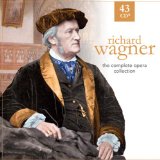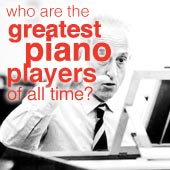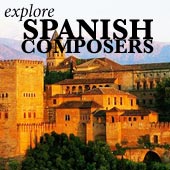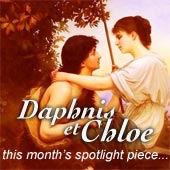Richard Wagner's 13 Operas
Magical Sound Worlds
The 13 Wagner Operas have exquisite music, magical worlds, and powerful drama. Here are all of them, from the composer's earliest works to his late triumphant masterpieces...
They were hugely influential for musicians and intellectuals, and they've become immortalized in the yearly Bayreuth Festival.
Thirteen operas isn't really that many, since this was pretty much Wagner's entire musical output during his life. But it's amazing that such a small body of work had such an impact on music and the world!
As well as the awe-inspiring music and drama, Wagner also made lots of changes to the way operas were performed.
For instance, he was the first person to dim the theater lights. He was also the first person to put the orchestra in a sunken pit, so that the audience could see the singers and action clearly.
Imagine trying to watch an opera with all the lights on and the orchestra in the way of the stage... thanks Wagner. Of course, these days we can enjoy amazingly high quality recordings and videos at home with our stereo systems, so there's not even any coughing!
The Three Stages of Wagner's Life
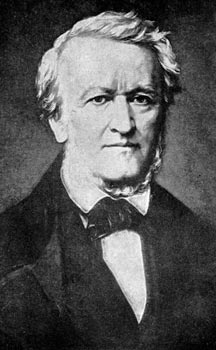 You can divide the Wagner operas into three stages which cover the composer's life. There's a definite difference in the operas from each era - you can see Wagner getting better at writing music and drama!
You can divide the Wagner operas into three stages which cover the composer's life. There's a definite difference in the operas from each era - you can see Wagner getting better at writing music and drama!The Early Stage Wagner operas:
(click the links to jump to the different sections of this page)
Wagner wrote these in the popular, conventional style of his day (they're influenced by Beethoven and Carl Maria von Weber). They don't really have any of the innovation or power of his later operas, although some people claim they can see budding genius in these works (I can... sort of).Wagner didn't like these early pieces. When he was older he actually disowned them, claiming that they weren't part of his proper output! I can kind of see where he was coming from.
The Middle Stage Wagner operas:
You can see Wagner getting better and better with these operas. They're more dramatic and powerful, and the music is more complicated. They start to sound a bit like the...
Late Stage Wagner operas:
- Die Meistersinger von Nurnberg
- Tristan and Isolde
- The Ring Cycle (Das Rheingold, Die Walkure, Siegfried, and Gotterdamerung)
- Parsifal
Now we're into the heavy stuff! These are the masterpieces, operas which broke amazing new ground. They have all the elements which most people think about when you mention Wagner - huge orchestras, hours and hours of music, extremely loud singing, and powerful plots.
They're mind-blowing! They also had radical innovations in pretty much all aspects of opera, from the orchestration to the structure to the harmony.
Wagner occasionally wrote non-operas music, such as the touching Siegfried Idyll, a birthday present for his wife.
Now let's look at each opera individually...
The 13 Operas
Die Feen (The Fairies): This was the first opera Wagner completed, when he was 20 years old. Unfortunately, it was never performed when he was alive. What a shame that Wagner never saw it! I really like the overture to this opera (it's sometimes performed on its own as a concert piece).
Das Liebesverbot (The Ban on Love): This comedy (based on Shakespeare's Measure for Measure) was the first of the Wagner operas that actually got performed. The premiere was a bit of a mess though - hardly anyone turned up to watch it, and the lead singer forgot the words! It was only ever performed that one time in Wagner's life.
Rienzi, der Letzte der Tribunen (Rienzi, the Last of the Tribunes): Ah, finally Wagner has a success! Despite the premiere (in Dresden, 1842) lasting 6 hours, the audience loved it. This opera is about a medieval Italian who manages to beat the nobility by using the power of the people. But the same people eventually turn against him.
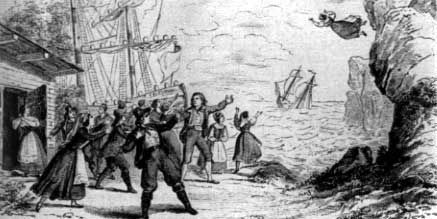
Der Fliegende Hollander (The Flying Dutchman): Wagner saw this opera as an important turning point in his career. I agree - it's the first opera where he uses leitmotifs (very short musical fragments representing a character, place etc.) in an important way.
The story is about a sea captain who is condemned to sail the oceans until Judgement Day. If he can find a faithful wife, however, he is released. The daughter of another captain falls in love with the doomed captain, and drowns herself to free him.
This theme of being redeemed by love is in nearly all of the Wagner operas which follow this one.
Franz Liszt wrote a piano piece using themes from a ballade from this opera. I used to like attempting to play this piece, but I never got very far! This was actually my first introduction to Wagner's music, and I've been hooked ever since.
This opera sounds heavier and more Wagnerian than his earlier works.
Tannhauser: This opera is part fantasy and part historical.
It tells the story of Tannhauser, who is captivated with the mythical Venus. He goes a little crazy during a singing contest to win the love interest Elisabeth, and starts raving about how great Venus and sensual pleasures are. He gets sent to ask forgiveness from the Pope, and on his way back sees Elisabeth's corpse. Tannhauser dies from grief, and is forgiven by God.
I didn't say it was easy to follow!
 Lohengrin: This opera is based on a medieval German story about a Swan Knight. It was premiered very successfully in Weimar in 1850.
Lohengrin: This opera is based on a medieval German story about a Swan Knight. It was premiered very successfully in Weimar in 1850.
"Mad" King Ludwig II of Bavaria was enchanted by this opera, and was inspired enough by it to build the beautiful Neuschwanstein Castle (pictured).
This opera is where the famous tune Here Comes the Bride comes from. I wonder how many newlyweds know that the marriage in the opera lasts about 20 minutes before the couple split up?
Finally, here are the late stage operas, beginning with...
Die Meistersinger von Nurnberg (The Mastersinger from Nuremberg): Wagner's second comedy. It's set in 16th century Germany. I like the title of this one, as I was actually born in Nurnberg!
Like Tannhauser, there's a singing competition in this opera. This time the hero actually wins it though! He does so by singing a new and modern-sounding song, while everyone else just sings traditional songs.
I think this is Wagner trying to make a subtle point about his own music! The composer did have a high opinion of his own work (who can blame him?).
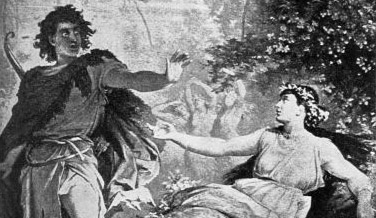
Tristan and Isolde: This is one of Wagner's most famous operas, because as well as being highly emotionally moving, it's also very important in the history of music.
It stretches and even disobeys western musical rules by using lots of suspended harmonies and discords (sounds which the ear wants to finish, but Wagner doesn't give us the satisfaction).The unresolved sound is meant to represent the frustrated sexual desire of the main characters. This is a really effective, clever way of adding extra layers to the opera.
The things I'm talking about are difficult to explain in writing so I'll use a musical example from the opera.
This is the the prelude to Act 3, and I think it illustrates the chromaticism (using unrelated notes to give the music a "colored" sound) and yearning emotions which the opera is famous for:
The opera is a tragic love story which was inspired by an affair Wagner had in Switzerland, and the gloomy writings of Arthur Schopenhauer.
I think it's one of Wagner's greatest achievements. Of course, not many people liked it back when it was first performed, because it sounded so new and different.
Finally, here are the late-stage operas...
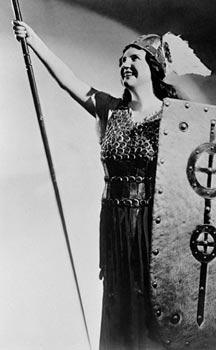 Der Ring des Nibelungen (The Nibelung's Ring, a.k.a. The Ring Cycle).
Der Ring des Nibelungen (The Nibelung's Ring, a.k.a. The Ring Cycle).
This is Wagner's 4 opera, 16 hour grand masterpiece, and perhaps the greatest work of art ever created.
The entire cycle, from the first ideas in Wagner's vast imagination to the last bar of music, took the composer 26 years to write (to be fair he did take a while off in the middle to compose the two operas above!).
The epic story involves dwarves, gods, semi-gods, giants, dragons, a magical ring (of course), a helmet that makes the wearer invisible, powerful swords, as well as love, lust, and betrayal.
It takes four nights to watch, and near superhuman amounts of skill and stamina to perform.
The four operas which make up the cycle are: Das Rheingold, Die Walkure, Siegfried, and Gotterdamerung. Since it took Wagner almost three decades to write everything, the music gets progressively more rich and complex with each opera. Gotterdammerung sounds a lot different from Das Rheingold!
The orchestra Wagner uses in the Ring Cycle is ridiculously large. He asks for, amongst other things, 6 harps, 8 horns, and two sets of timpanis. Das Rheingold uses 18 anvils and a thunder machine in some scenes.Read more about Wagner's Ring Cycle.
Parsifal: This was Wagner's very last opera, which is about the quest for the Holy Grail. Wagner blended a couple of different medieval sources to make the story.
It was premiered at the Bayreuth Festspielhaus, and wasn't allowed to be played anywhere else for 20 years after it was written. That's one way to get people to go to Bayreuth (as if they'd need extra encouragement...).
It's a tradition at Bayreuth that audiences don't clap after the end of the first act. It came from a misunderstanding, when the audience thought that Wagner didn't want any clapping at all.
Wagner himself cried "Bravo!" at the end of the second act, but other members of the audience hissed at him!
Although there aren't many Wagner operas, the ones we do have captivate and enchant listeners with their sweeping music and stories of legend and heroism.
Hopefully I've piqued your interest in the drama and magic of these wonderful works, and you can now go and discover your own favorite Wagner operas. Don't forget to applaud!
If you want to own recordings of every single Wagner opera (who wouldn't?), then I recommend this bargain-priced 43 CD complete collection. Despite being ridiculously cheap the recordings are excellent, performed by some of opera's most renowned performers. Have a look...
Want more operas? Have a look at Mozart's greatest operas...
If you like my site, please click "Like"... thanks!
